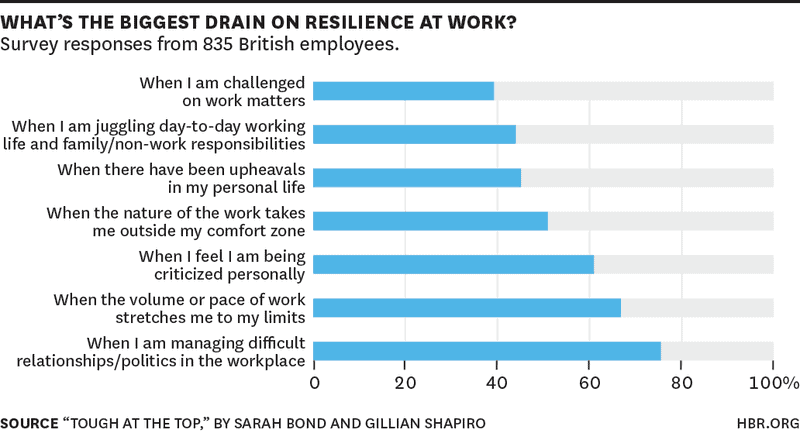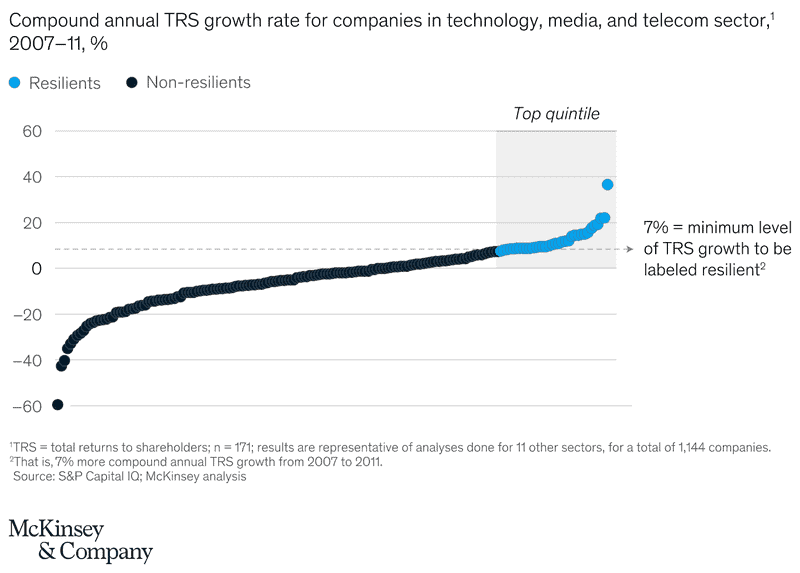Worried about your company failing due to COVID-19? Resilience is top of mind for leaders today, and it will prove to be a key dimension for measuring success over the next decade. Here are 3 powerful strategies to build resilience planning into your business to overcome and survive 2020 and beyond.
Reading time: <11 min
 Strategies to Make Your Business Resilient
Strategies to Make Your Business Resilient
Worried About The Future? Rest Easy!
This is the first post in multi-part series I’m calling “Rest Easy: A 5-Part Playbook for Recession-Proofing Your Business”.
In this series, I will show you how to safeguard your business and reputation against the effects of the coronavirus pandemic and discuss some of the practices, programs, resources, and strategies that are available to small business owners, soloprenuers, and gig economy workers.

The title of the series isn’t arbitrary though, it’s really an acronym for the topics covered in each of the five posts in this series:
- Resilience (this post)
- Education
- Systems
- Testimonials
- Earnings Accrued Strengthen Yields
(Ok, ok, I know the acronym is long, but I like using acronyms to make my systems more memorable. Also, ‘RESTE’ looked stupid (and was a bit too close to ‘teste’ for my liking) so I transformed the E into EASY, and everything else just fell into place. It may help to put on The Harder They Come Soundtrack from the 1972 film by the same name as you’re reading this post if you really want to get into a “Rest Easy” vibe.) 😉
 Rest Easy by Focusing on Resilience
Rest Easy by Focusing on Resilience
Business Continuity and Resilience Planning
In this post, I’m going to discuss what “business resilience” means and why it’s critical to get management in your organization focusing on business resilience planning before an emergency.
I’ll also propose 3 agile strategies for building resilience into your organization now that could help your company survive the next global pandemic.
Twenty-twenty will certainly go down as one of the hardest years many of us have faced in our lifetimes. For me, 2019 was right up there. I lost my dad, my dog, and a new business within the latter 6 months of the year.
Geopolitics, economic downturns, and numerous other factors can have significant effects on your operational capabilities and performance.
Consumer spending in the US fell by ~20% during the first two months of COVID-19’s accelerating spread, according to the US Department of Commerce, while the pandemic also disrupted ~75% of supply chains, according to the Institute for Supply Chain Management.
Economic Disruption and Natural Disasters
Even before COVID-19, many businesses were struggling to plan for, respond to, resume speed and keep pace with technological change.
Sarah Bond and Gillian Shapiro of the Harvard Business Review conducted a survey of 835 employees from public, private, and nonprofit firms about what was happening in their lives that required resilience. What did they determine? They didn’t point to tragedies or the economy — they pointed to corporate culture and their co-workers.
 Social Dynamics Caused the Biggest Drain
Social Dynamics Caused the Biggest Drain
Understanding that, in times like these, the key to moving forward is thinking positive (albeit difficult), and becoming resilient. While I've been working on my own personal resilience, I've also been working hard to ensure that my relationships, my other companies, and my community and environment, are prepared for unexpected challenges and adversity.
As Diane Coutu reports in “How Resilience Works”:
“Resilient people possess three characteristics — a staunch acceptance of reality; a deep belief, often buttressed by strongly held values, that life is meaningful; and an uncanny ability to improvise. You can bounce back from hardship with just one or two of these qualities, but you will only be truly resilient with all three. These three characteristics hold true for resilient organizations as well.…Resilient people and companies face reality with staunchness, make meaning of hardship instead of crying out in despair, and improvise solutions from thin air. Others do not.”
Why is resilience in business important?
It means your company survives – or even thrives – when others are failing.
Resilience Reduces Stress
Resilience is a term often used in psychology to describe “the process of adapting well in the face of adversity, trauma, tragedy, threats or significant sources of stress.”
 Developing an Increased Capacity to Identify Additional Sources of Stress Builds Resilience
Developing an Increased Capacity to Identify Additional Sources of Stress Builds Resilience
For people, resilience means you bounce back (rather than falling apart) after a crisis (like relationship troubles, health issues, work conflicts, or financial setbacks).
Resilience won't eliminate risk or solve your problems, but it can give you the opportunity (and clarity) to see past them while better managing your stress levels.
Resilience Planning Recession-Proofs your Business
Miriam Webster defines resilience as the “ability to recover from or adjust easily to misfortune or change.”
SearchCIO extends this definition, noting that “business resilience is the ability an organization has to quickly adapt to disruptions while maintaining continuous business operations and safeguarding people, assets and overall brand equity.”
Business resilience planning is also frequently referred to as business continuity planning, and is an assessment of the sustainability of a given organization.
In the past, I taught week-long courses to experienced Fortune 100 organizations and their executives on disaster recovery and facility and business continuity planning in the enterprise, with a broader focus on computer, network, and information security.
For these organizations, business resilience means implementing digital systems and processes to ensure business continuity, while offering products or services that remain (or become) desirable in the face of global events, financial instability, or threats to a business's core operations.
(Note: Although some types of businesses may have the ability to leverage location intelligence in high-risk environments, potentially enhancing security and resilience, references to “Business Resilience” in this post are not references to the ArcGIS software by the same name.)
During the last downturn, McKinsey & Company traced the paths of more than 1,000 publicly traded companies in different industries and with different maturity models, and found that only about 10 percent of those companies fared materially better than the rest.
While the last downturn was severe, some companies flourished despite current risks

They found some interesting parallels in how sustainable companies would weather a storm: how they prepared for them, how they acted during tougher phases, and how they came out of them.
With most of these organizations relying heavily on data, analytics, and automation, it became clear that digital technologies will prove to be an increasingly critical element of business resilience tomorrow.
Still, one core insight prevailed: the companies that survived – those that demonstrated true resilience – moved early, ahead of the downturn. They started preparing early, their numbers dipped less, and they came out on top.
“When the economy started heading south, what distinguished [them] was earnings, not revenue. By the time the downturn reached its trough in 2009, the earnings, measured as earnings before interest, taxes, depreciation, and amortization (EBITDA), of [these companies] had risen by 10 percent, while industry peers had lost nearly 15 percent.”
A resilient company responds swiftly to tackle crises, recovers from adversity so that it can outperform its competition, and reinvents itself to stay ahead of peers in the future.
In the past four downturns since 1985, only about one in seven companies increased both its sales growth rate and its profit margins, according to a 2019 BCG study. These companies grew sales by 14% more and improved their margins by 7% more than the 44% of companies in distress that declined on both parameters.
“A company needs to embed resilience in every aspect of the organization, from its go-to-market approach to its operations to its most critical infrastructure. Vulnerabilities in any area could affect the business’s ability to survive and thrive,” says BCG.
The 3 Fastest Ways to Make Your Business Resilient
In their study, McKinsey & Co identified 3 core strategies that helped these companies avoid downtime and create this earnings advantage:
- They created a safety buffer by cleaning up their balance sheets before the dip
- Most companies cut costs ahead of the curve
- They focused on growth, even if it meant incurring costs

While informative, these strategies can be a bit tough for smaller organizations to take action on. So, for maximum impact, my goal in this article is to cover 3 strategies that leaders at most companies will find:
- easy to understand,
- (relatively) easy to implement, and
- repeatable across various verticals.
It is this combination of factors that makes these strategies effective for creating business resilience. And proven strategies can help reduce the sources of stress that test your resilience in the first place.
The 3 strategies that match all of these factors are:
- Recurring Revenues
- Productized Service Offerings
- Automated Client Acquisition
Strategy 1: Recurring Revenues beget Business Resilience
While this first strategy might seem a little “on the nose,” the reality is that many of you are running pure service businesses that rely on you to repeatedly “sell” every project to each and every client, each and every time they need your help (I know because I asked).
When you switch to a recurring model, you're automating the continuation of a service over a period of time (be it every week, month, or quarter), and with it, increasing your CLV (customer lifetime value).
 MRR Dashboard | Photographer: Austin Distel | Source: Unsplash
MRR Dashboard | Photographer: Austin Distel | Source: Unsplash
Knowing that, it’s easy to understand why automating recurring revenues is one of the most effective ways to create resilience in your business, regardless of your business model, and it’s a strategy everyone should consider.
It may not be as simple as just changing your billing frequency though, since customers will need a motivation to move to a recurring payment model.
In most cases, you'll have to adjust your pricing, offer quarterly or annual discounts for advanced renewal, and productize your service offerings to make it easier for customers to understand what they're buying, and why they should pay in advance.
Which brings us to strategy 2…
Strategy 2: Productize Your Service Offerings, Now!
If you've never considered productizing your services before (or if you're not even sure how you'd go about doing so), in the next post, I'll show you a productized service that can be created within virtually any business (from brick & mortar shops to service-based B2B's) that ticks the “recurring revenue” checkbox. I think of it as a “recipe for resilience.”
Stop Trading Time for Money
Whether you're making a living as a freelancer or consultant, or operating a traditional “service business,” you are trading your hours for dollars. If you have a a team, your business likely still depends on project-to-project revenues to keep the lights on.
Even when your consulting business is thriving, you still only have so much time to exchange for money. This makes it very difficult to scale, and is a big reason so many service companies are not resilient.
 Time for money | Photographer: jeshoots.com | Source: Unsplash
Time for money | Photographer: jeshoots.com | Source: Unsplash
While service businesses are arguably the easiest to start (and can be some of the most profitable, at scale), they're also often the most difficult and expensive to grow.
To have the ability to keep growing as you rapidly adapt, you need to:
- constantly find, educate, and convert new client leads,
- carefully qualify those leads to sell them high-ticket offerings,
- always take on new clients, even when your skills and time are limited.
However, by productizing your service offerings, you can shorten your sales cycles while automating 80% of the acquisition and qualification processes.
What does it mean to productize your service offerings?
From your customer’s perspective, it most often means a “done for you” solution with a strong value proposition at a set price and with a predefined scope.
From a business owner's perspective, a productized service is one that runs systematically, scales geometrically, and continues to produce revenues and grow with or without your constant care and feeding. That is how you build resilience into a service business and thrive as your competitors flail.
To be successful in productizing your business, you don’t need to offer more services, you just need to offer better ones.
Strategy 3: Automate Your Client Acquisition
The final strategy, and the one that increases the effectiveness of both of the previous strategies, is that of client acquisition automation.
In general, there are 3 distinct stages of client acquisition, each of which can generally be improved with automation:
- Initial Lead Generation
- Thorough Lead Qualification
- Ongoing Lead Segmentation
By automating each of these 3 stages, you create a “funnel,” whereby hundreds of thousands (or even millions) of potential prospects come into the top of the funnel, and as you strategically qualify, segment and nurture those prospects, hot leads come out the bottom, ready to purchase your recurring, productized service(s).
 The Digital Marketing Funnel | Source: Angela Chapa @ Crazy Egg
The Digital Marketing Funnel | Source: Angela Chapa @ Crazy Egg
This is the essence of what the marketing world refers to as a “sales funnel,” and we'll go into more detail on each of these stages in the 3rd installment.
This post is intentionally light on tactics and heavy on strategy, and it's meant to make you think about what you've been doing up to now.
Throughout the remainder of this series, my aim will be to help you create resilience by ensuring your business:
- Exists in a growing market
- Focuses on recurring revenues
- Doesn’t rely on loopholes
- Automates numerous human activities
- Focuses on high ticket sales
- Delivers results fast
Whether you know it or not, resilience is the key to longevity, scalability, and ultimately, the success of your business.
So, let me know in the comments below:
Does your business have a recurring revenue stream?
Are your services already productized?
Are you using systems to automate your client acquisition?
Do you have a good foundation to create resilience in your business?

